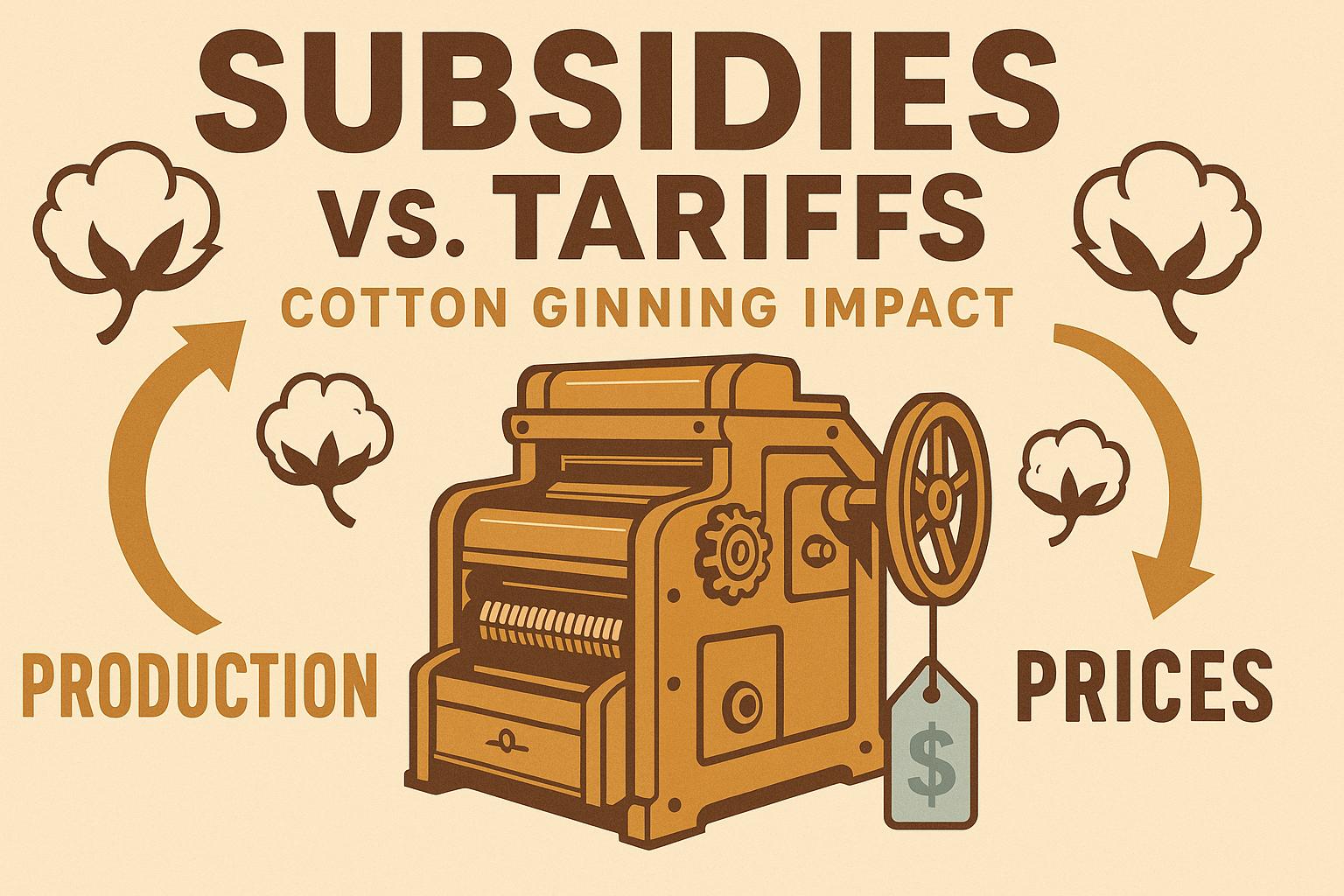Want premium cotton and better profits? Here’s the quick answer: Cotton fiber quality depends on genetics, weather, and farming methods. Harvest when 70–80% of bolls are open to balance fiber maturity and avoid damage. High-quality cotton means longer fibers, fewer defects, and higher prices. Use tools like micronaire tests to measure fiber readiness and find local gins at cottongins.org.
Key Takeaways:
- Fiber Quality Factors: Genetics, weather, soil, and farming practices.
- Ideal Harvest Timing: 70–80% open bolls to ensure mature fibers.
- Testing Tools: Length, strength, micronaire, and cleanliness tests.
- Boost Profits: High-grade cotton fetches better market prices.
Harvest smartly to protect your cotton’s value and maximize earnings. Let’s explore how to make it happen.
Factors affecting fibre quality
What Affects Cotton Fiber Quality
Cotton fiber quality is influenced by a mix of genetics, environmental factors, and farming practices.
Cotton Plant Varieties
Different cotton types produce fibers with distinct characteristics:
- Upland cotton (G. hirsutum): Known for medium-length fibers.
- Pima cotton (G. barbadense): Produces longer, finer, and stronger fibers.
Weather and Growing Conditions
Environmental conditions play a big role in fiber development:
- Extreme temperatures can either speed up or slow down cell growth and wall thickening.
- Drought can lead to shorter, coarser fibers, while too much moisture can affect fiber maturity.
- Sunlight is essential for photosynthesis and proper boll development.
- Soil pH and nutrient balance directly impact plant health and fiber quality.
Events like heat waves, prolonged droughts, heavy rains, or early frost can negatively affect fiber length, strength, and overall maturity.
Field Management Methods
Effective crop management practices can help maintain fiber quality:
- Balanced fertilization: Use soil tests to apply the right mix of nitrogen, phosphorus, potassium, and micronutrients.
- Targeted irrigation: Keep moisture levels consistent to avoid drought stress or waterlogging.
- Pest and disease control: Combine regular field scouting with biological methods and spot treatments.
- Growth regulation: Apply growth regulators to manage plant height and improve light penetration within the canopy.
Next, we'll dive into how precision tests can measure these fiber attributes.
Measuring Cotton Fiber Quality
Length and Strength Tests
Length and strength tests turn the impact of variety and environment into measurable data. Fiber length is key for predicting yarn quality and textile performance, with top-grade cotton requiring fibers at least 1-1/8 inches long. Strength, measured in grams per tex, indicates whether the cotton bolls have matured enough for harvesting.
Fiber Thickness and Development
Micronaire testing evaluates fiber thickness and maturity by measuring airflow resistance. Ideal micronaire values range from 3.5 to 4.9, signaling well-developed fiber walls and readiness for harvest. Immature fibers can lead to processing challenges and lower-quality textiles, making this measurement critical for timing the harvest.
Color and Cleanliness Grades
Color and cleanliness grades reflect both harvest timing and market value. Prolonged weather exposure can darken fibers, lowering their grade, while delayed harvesting increases the presence of field debris. These grades, determined using the USDA's Universal Cotton Standards, help farmers balance fiber development with the risks of adverse weather.
Next, we'll look at how to pinpoint the perfect harvest window using these quality metrics.
sbb-itb-0e617ca
When to Harvest Cotton
Timing your cotton harvest is all about balancing fiber quality and yield. Harvesting too soon can lead to immature fibers, while waiting too long increases the risk of weather damage and losing bolls. Keep an eye on the percentage of open bolls and micronaire levels. The ideal time to harvest is when 70–80% of the bolls are open, ensuring mature fibers and a better yield.
Market and Business Effects
Once growers identify the perfect harvest window, the next step is implementing market strategies to get the best returns.
By harvesting cotton when fiber maturity is at its peak, U.S. growers can translate quality into higher profits. Premium-grade fiber not only fetches better prices but also helps secure more favorable sales contracts.
Locating a Cotton Gin
Choosing a nearby cotton gin at harvest time helps maintain fiber quality and boosts potential earnings. Farmers can use cottongins.org to find gins across the U.S., organized by county and state. The platform also allows users to submit new entries, ensuring the directory stays up to date.
Conclusion
Cotton fiber quality is shaped by a mix of genetics, growing conditions, and field management techniques. High-grade cotton relies on precise measurements of fiber length, strength, and micronaire, along with maintaining proper color and cleanliness throughout its growth. These elements play a key role in determining processing efficiency and market value across the supply chain.
Harvest timing is critical, aiming for 70-80% open bolls to balance fiber maturity with potential environmental risks. A well-planned harvest strategy, paired with consistent quality checks, allows growers to secure top prices and maintain profitability in the competitive U.S. cotton market.
Once your cotton is ready, the next steps are straightforward: Head to cottongins.org to find nearby gins, submit processing requests, and ensure your harvest is handled promptly. Connecting directly to processing facilities helps protect fiber quality and boosts your cotton’s market value.


